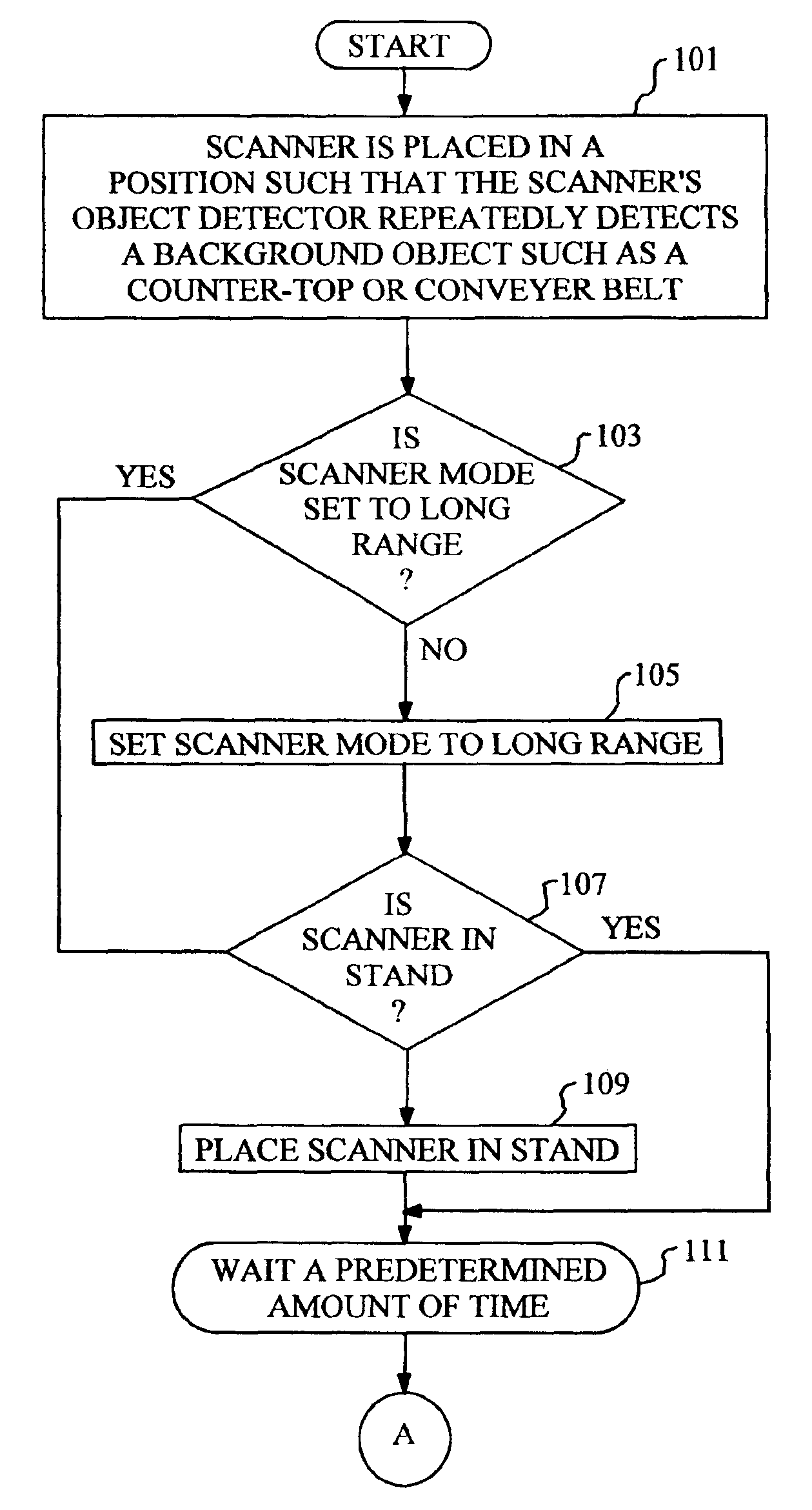Automatic range adjustment techniques for stand-mountable bar code scanners
a bar code scanner and automatic range adjustment technology, applied in the field of optical bar code scanners, can solve the problems of scanner failure to detect and decode bar codes, and it is not possible to read any bar codes
- Summary
- Abstract
- Description
- Claims
- Application Information
AI Technical Summary
Benefits of technology
Problems solved by technology
Method used
Image
Examples
Embodiment Construction
As stated above, the invention relates to stand-mountable bar code scanners that are equipped to operate in a long-range mode and a short range mode of object detection. Examples of such bar code scanners are disclosed in U.S. Pat. No. 5,340,971, issued on Aug. 23, 1994; U.S. Pat. No. 5,528,024, issued on Jun. 18, 1996; U.S. Pat. No. 5,525,789, issued on Jun. 11, 1996; U.S. Pat. No. 5,825,012 issued on Oct. 20, 1998; U.S. Pat. No. 5,886,337 issued on Mar. 23, 1999; U.S. Pat. No. 5,789,730, issued on Aug. 4, 1998; U.S. Pat. No. 5,837,989, issued on Nov. 17, 1998; and U.S. patent application Ser. No. 09 / 273,825 filed on Mar. 22, 1999. The disclosures of these issued U.S. Patents and patent application are incorporated by reference as if fully set forth herein.
Refer now to FIGS. 1A and 1B, which together comprise a flowchart setting forth an operational sequence according to a preferred embodiment of the invention. The operational sequence commences at block 101, where a bar code scann...
PUM
 Login to View More
Login to View More Abstract
Description
Claims
Application Information
 Login to View More
Login to View More - R&D
- Intellectual Property
- Life Sciences
- Materials
- Tech Scout
- Unparalleled Data Quality
- Higher Quality Content
- 60% Fewer Hallucinations
Browse by: Latest US Patents, China's latest patents, Technical Efficacy Thesaurus, Application Domain, Technology Topic, Popular Technical Reports.
© 2025 PatSnap. All rights reserved.Legal|Privacy policy|Modern Slavery Act Transparency Statement|Sitemap|About US| Contact US: help@patsnap.com



